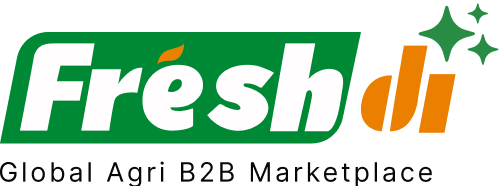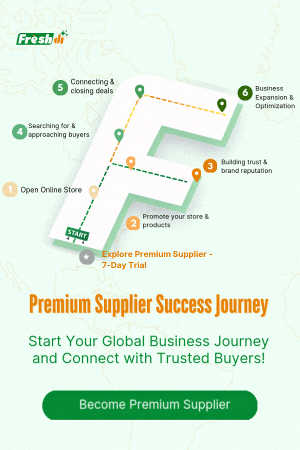Introduction – Germany’s Cinnamon Market by the Numbers
Welcome to a spicy deep dive into Germany’s bustling cinnamon trade. While Germany isn’t a cinnamon producer itself, it plays a big-league role in importing, consuming, and re-exporting cinnamon across Europe. In fact, Germany is the second-largest importer of cinnamon in the European Union, making it a hub for both traditional and organic cinnamon-based products.
With a growing market value projected to hit $34.4 million by 2025 (up from $12.5 million in 2018), there’s never been a better time to take a closer look at who’s driving this growth on the ground. Whether you’re a buyer, distributor, or simply a curious industry observer, understanding who the top-performing suppliers are can help you make smarter sourcing decisions.
Let’s break it all down with verified data, export trends, and the Top 8 Cinnamon Suppliers in Germany in Week 16 of 2025—based on real-time insights from platforms like Freshdi, which helps buyers stay ahead of RFQ trends, supplier rankings, and trade dynamics.
Deep Dive – Key Production, Export Statistics & Demand Insights
Germany’s Role in the Global Cinnamon Trade
Although Germany doesn’t grow cinnamon, it’s a powerhouse in trading it. The country imported 5,259 tonnes of cinnamon in 2021, valued at around €23 million, with the top suppliers being:
- Indonesia (27%)
- Vietnam (20%)
- Madagascar (18%)
- China (17%)
- Sri Lanka (14%)
Export Figures You Shouldn’t Ignore
Germany exported 1,501 tons of cinnamon in 2024, maintaining a strong position as Europe’s second-largest cinnamon exporter. The primary destinations for these re-exports include:
- Poland
- Austria
- France
- Denmark
- United Kingdom
The average export price stood at $7,937 per ton, showing a slight decline due to global supply chain shifts.
Market Demand Spikes
Recent data from Freshdi’s RFQ (Request for Quote) trends show a 15% increase in buyer activity from Q4 2024 to Q1 2025. This aligns with Germany’s recovery to a market value of $12 million in 2024, proving that demand is bouncing back stronger than ever.
Top 8 Verified Cinnamon Suppliers in Germany – Proven Export Performers
These suppliers have shown consistent performance in exports, international reach, and product quality. Verified by Freshdi, here are Germany’s most trusted cinnamon suppliers in Week 16 of 2025:
-
TRULLO Weinagentur-Weinhandelsgesellschaft mbH
Specializing in spiced wine with cinnamon infusions, TRULLO stands out for its unique applications in beverages and culinary experiences. Their B2B presence is growing in Austria and France. -
DEBANG EXPORT & IMPORT GMBH
A top-tier exporter of bulk cinnamon, DEBANG offers both Ceylon and Cassia variants. Known for organic certifications and HACCP-compliant facilities. -
Spice Bar GmbH
Renowned for sustainably sourced cinnamon, Spice Bar is a leader in Germany’s organic spice segment. They cater to premium grocery chains and health-conscious brands. -
Würzteufel GmbH
This supplier offers a wide range of bulk spices including Korintje cinnamon. Their logistics and fulfillment capabilities make them a go-to for EU-wide distribution. -
EHL Ingredients GmbH
With a strong export footprint and certifications like ISO 22000, EHL focuses on high-volume cinnamon supply for food manufacturers across Europe. -
Herbaria Kräuterparadies GmbH
Specializing in organic and biodynamic herbs, Herbaria is a certified supplier of cinnamon to both the food and nutraceutical sectors. -
HS Trading GmbH
A reliable mid-sized player focusing on fair-trade cinnamon from Sri Lanka. Their partnerships with local cooperatives ensure traceable sourcing. -
OrgaNatura GmbH
This supplier is gaining traction for their pesticide-free, EU-certified cinnamon products, particularly in the natural cosmetics and wellness food markets.
Dynamic Ranking Note
Freshdi’s real-time analytics offer “Suppliers of the Week” and “Top Performers of the Quarter”, which may adjust this list based on RFQ volumes, customer reviews, and export data. Always check Freshdi’s current rankings to stay updated on who’s hot in the cinnamon trade.
Market Navigation – Statistical Trends, Value Dynamics & Export Dynamics
Which Cinnamon Types Are in Demand?
- Korintje (Cassia): Dominates the German market due to its affordability and suitability for baked goods.
- Ceylon (“True Cinnamon”): Growing in popularity, especially in organic and health-focused product lines.
- Saigon Cinnamon: A niche but high-value variant used in gourmet and specialty products.
Seasonal Price Shifts to Plan Around
Cinnamon prices don’t stay still. In 2024:
- Import prices averaged $4,834 per ton, a 10.3% drop from the previous year.
- Export prices dipped from $8.10/kg in 2021 to $7.72/kg in 2022.
This seasonal variation is often linked to:
- Harvest cycles in Southeast Asia
- Holiday season demand spikes (Q4)
- Shipping and fuel cost fluctuations
Historical Data That Informs Your Next Move
Looking at past pricing helps you negotiate smarter. For instance, buyers on Freshdi used Q2 2023 price dips to lock in bulk contracts, saving an average of 12% compared to peak Q4 rates.
Conclusion – Leveraging Data for Informed Procurement
Germany’s cinnamon market is more than just spice—it’s a strategic trade hub. With annual export volumes exceeding 1,500 tons and thriving demand for both conventional and organic variants, the country is a central player in Europe’s cinnamon ecosystem.
Buyer’s Checklist: Choosing the Right Cinnamon Supplier
- ✅ Verified export history
- ✅ Organic or sustainability certifications
- ✅ Presence on platforms like Freshdi
- ✅ Transparent pricing models
- ✅ Consistent quality and packaging standards
- ✅ Ability to meet seasonal volume surges
- ✅ Positive feedback from international buyers
How Freshdi Empowers Cinnamon Buyers
Freshdi isn’t just a marketplace—it’s a data-driven procurement ally. From supplier scorecards to RFQ analytics and dynamic rankings, Freshdi helps buyers:
- Identify top-performing suppliers
- Monitor price trends
- Access real-time RFQ volumes
- Track certification and compliance status
If you’re sourcing cinnamon in Germany or looking to expand into the EU market, using tools like Freshdi can save you time, money, and a whole lot of guesswork.
Future Outlook – What’s Next for Germany’s Cinnamon Trade?
- 📈 CAGR of 4.9% expected through 2031
- 🌿 Organic and traceable cinnamon will dominate B2B demand
- 🌍 Germany’s export share likely to grow beyond 17% of EU totals
- 🤝 Supplier-buyer partnerships will hinge on transparency and ESG standards
Whether you’re a startup sourcing your first shipment or a seasoned importer, aligning your strategy with data-backed insights is the smartest way forward.
FAQs
1. What is the most imported cinnamon type in Germany?
Korintje cinnamon (a type of Cassia) is the most commonly imported due to its low cost and strong flavor, ideal for baked goods.
2. Are German cinnamon suppliers certified for organic products?
Yes, many top suppliers like Spice Bar and Herbaria hold EU Organic and other sustainability certifications.
3. How can I verify a cinnamon supplier in Germany?
Use platforms like Freshdi to view real-time supplier data, export history, certifications, and buyer reviews.
4. When is the best time to buy cinnamon in bulk?
Q2 is often the best time to lock in lower prices before high Q4 holiday demand drives prices up.
5. Can I request samples from German suppliers before placing bulk orders?
Absolutely. Most verified suppliers on Freshdi offer sample shipments for product assessment before finalizing large orders.
References
- Grandview Research – Cinnamon Market Germany
- Selina Wamucii – Cinnamon Prices in Germany
- CBI – Cinnamon Market Potential in Europe
- IndexBox – Germany Cinnamon Market Analysis
- Freshdi – Verified Supplier Listings & RFQ Trends
- Cognitive Market Research – Cinnamon Global Forecast


